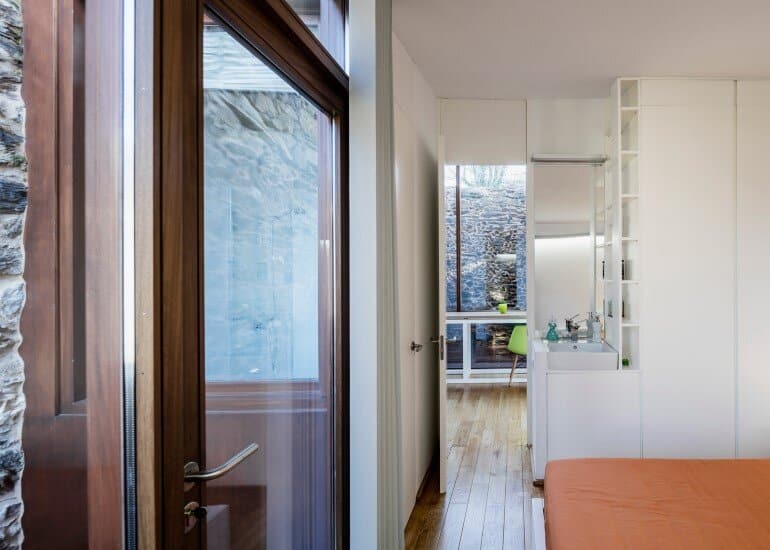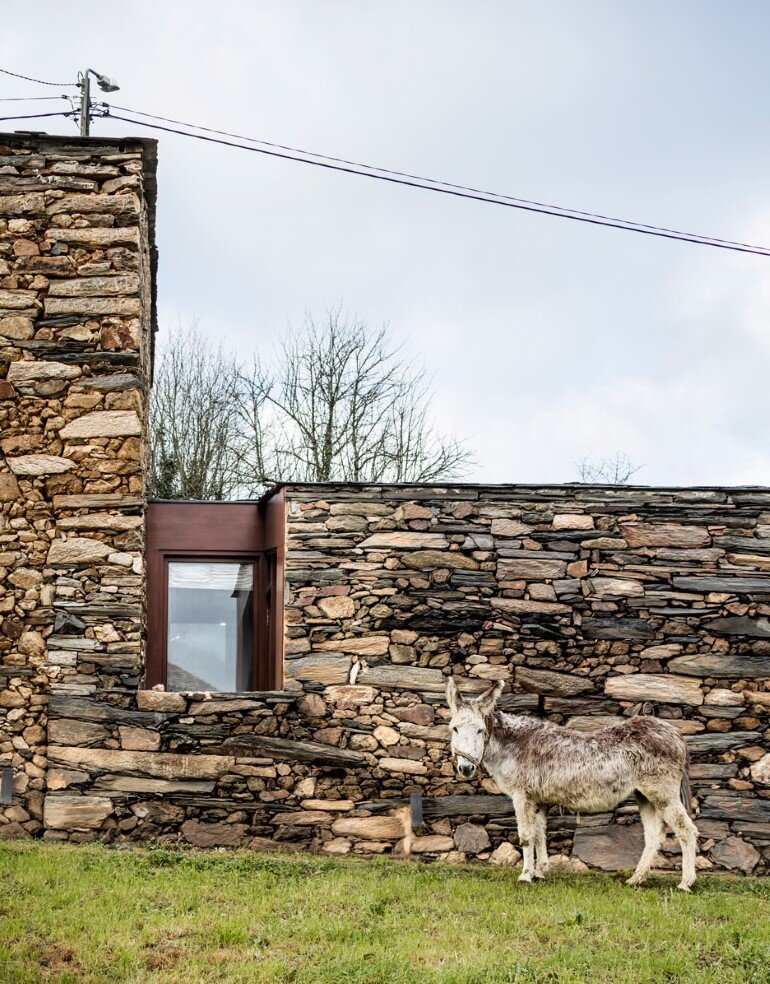Architects: Cubus
Architect in Charge: David Pou van den Bossche, Estel Ortega Vázquez
Location: Doade, Lugo, Galicia, Spain
Photographs: Adrià Goula, Antonio Rodriguez, Estel Ortega
Barcelona-based Cubus Arquitectura has turned an old stone winery into a family home in Galicia, Spain.
Description by Cubus: The old stone wineries of the Ribeira Sacra (Galicia) were (and are) heterogeneous constructions linked to house where the activities of the local economy are developed, such as preserving ham, wine and spirits in addition to storing straw and putting the beasts to rest. The project fully recovers one of these old cellars to convert it into a new home. The project is based on three premises:
1. Respect the initial volume and the local architecture. The village is harmonious: stone buildings and the existing wild grass wild are balanced. The proposal doesn’t want to break this equilibrium so it works respecting the limits of the existing walls. It also integrates the values of the local architecture (volumes of dry stone, tectonics, with only a few holes) without renouncing to it’s own language.
2. Local materials. It’s created a case with the existing dry stone walls and slate roof (recovered from an old house). Wood is the second main material. The rest is according to the knowledge of the local constructor.
3. Light, ventilation and views. It was necessary to ensure air and light conditions to provide comfortto the home, but mostly to make the house be able to enjoy the landscape.
The initial volume consists of two bodies that remain virtually unchanged: a two-storey haystack and a second volume with one floor that integrated the beasts place and the wine cellar. Both are semi buried by the road against the west facade, and open to east across the landscape.
The house without windows
This is how people from the town baptized the house. This nickname explains very well the strategy that has been raised to solve the difficult initial situation of the main volume, semiburied and very wide. By emptying the corners patios are created, that establish relationships that offer diagonal views, interior lighting, and cross ventilation. This strategy defines not windows but voids on the facades, giving an appearance of a tectonic house without windows, but establishing an continuous relationship with the landscape between inside and outside.
Thank you for reading this article!





















